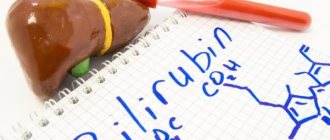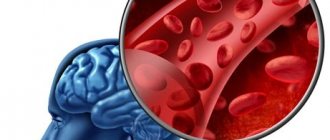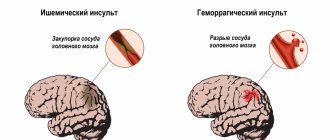By the frequency, rhythm and strength of oscillatory blood beats, one can judge a person’s physical health as a whole, record dangerous cardiac disorders, and determine the effectiveness of sports training. Changes in heart rate are symptoms of many life-threatening conditions and diseases, so it is important to know physiological norms. They are different for people of different ages.
What is pulse
Pulse is a jerky oscillation of the walls of blood vessels that occurs as a result of the flow of blood after it is expelled from the cardiac cavities and enters the large main and then peripheral arteries.
The nature of the pulse wave propagation and the number of its repetitions depends on the cardiac cycle, due to which, when indicators change, disorders in the human body are judged. Unlike the heart rate (HR), which reflects only the number of heart beats in one minute, the pulse shows the number of waves and impulses occurring in the arteries in the same unit of time. Pulse diagnostics are widely used in modern medicine. In addition to the traditional manual method of determination by palpation on the radial, carotid, femoral or temporal artery, a hardware examination is carried out. To do this, use a pulse oximeter, heart rate monitor or electrocardiograph, each of which helps to anticipate the number of wave oscillations per minute.
How to measure your pulse correctly
Wave-like fluctuations in the blood are clearly noticeable when touching certain parts of the body. Those under the skin of which large arterial vessels are located. To measure the frequency and assess the rhythm of the pulse, you should apply your fingers: fixing them at one point quite tightly, but without strong pressure. Areas to check for pulsation:
- carotid artery: a point on the front surface of the neck, on the right, under the jaw;
- radial artery: on the inside of the wrist of the left or right hand;
- temporal artery: on the side of the left or right temples;
- brachial artery: on the inner surface of the elbow;
- popliteal: in the area of the popliteal folds of the legs;
- femoral: at the junction of the pelvis and lower limbs.
The measurement accuracy is the same for all methods. The most popular methods remain recording the pulse on the wrist or neck. To calculate its frequency, it is important to use a stopwatch or electronic timer. Applicable time interval: 1 minute. It is necessary to measure at rest, preferably before eating: for example, after waking up or during a period of rest.
The rhythm and force of the beats cannot be assessed without the use of special instruments. But with the manual method, sudden changes in the nature of the pulsation are noticeable. Normally, it is measured, at equal intervals, without acceleration or fading. If the blood impulses are poorly palpable, too weak or uneven, this is an unfavorable sign. You should undergo a detailed diagnosis.
Table by age
A person’s pulse rate depends on the environment, overall health and psycho-emotional balance. Below is a list of factors that influence the value of this indicator:
- gender - in men, the pulse rate is on average 5-8 beats per minute less than in women. This is due to the anatomical features of the structure of the heart: due to the large size of the heart muscle, the required volume of blood is pumped in fewer contractions;
- environment - in the hot season, under the influence of hot temperatures, the heartbeat increases, in cold climates it becomes slower, since the speed of blood flow decreases. Psycho-emotional or physical stress provokes an increase in heart rate within the upper limits of normal;
- posture – in a horizontal position the wave number is weaker than in a vertical position. This occurs due to slowing blood flow and reducing the load on the heart;
- provoking factors - with an increase in body temperature by more than one degree against the background of an infectious, viral disease or prolonged exposure to the sun, the pulse quickens by 10 or more beats per minute. Physical activity also affects this indicator. Walking, running or squats increase heart rate and the number of pulse oscillations to 120-140 in an adult;
- age – the normal heart rate by age depends on the characteristics of the development and functioning of the cardiovascular system. For example, in newborns, due to the smaller size of the heart and lungs, the distinctive characteristics of breathing after birth and the restructuring of the circulatory system, the pulse significantly exceeds the norm for an adult. In older age, the cause is neurocirculatory dystonia, which occurs when the functioning of the autonomic nervous system is disrupted. Normally, by the age of 15-18, a teenager has a pulse of 60-80 beats.
Below is a table of heart rate norms by age in adults and children:
| Period, age | Minimum/maximum heart rate per minute | Average value |
| Newborn baby (up to 4 weeks) | 140/170 | 140 |
| Infant, 1-6 months | 130/160 | 140 |
| 6-12 months | 120/140 | 130 |
| 2-3 years | 110/150 | 120 |
| 3-6 years | 100/130 | 110 |
| 6-8 years | 80/120 | 90-100 |
| 10-12 years | 70/110 | 90-100 |
| 12-14 years old | 70/100 | 90 |
| 14-16 years old | 60/90 | 70-80 |
| 16-18 years old | 60/85 | 75 |
| 18-30 years old | 60/80 | 70 |
| 30-40 years | 65/85 | 75 |
| 40-50 years | 70/90 | 80 |
| 50-60 years | 75/95 | 80-85 |
| 60-70, over 70 years old | 80/95 | 90 |
Palpitations during pregnancy
The body undergoes many hormonal changes during pregnancy. Against this background, the heart rate increases, and sometimes physiological tachycardia occurs. There is nothing dangerous about this; an increase in heart rate is just one of the basic symptoms of pregnancy.
The change in heart function is most noticeable in the first months of pregnancy - the pulse increases to 100, sometimes 110 beats.
But after the 13th week of the period, the frequency decreases
. Another jump to 100 beats occurs in the last trimester: the volume of blood transferred increases, the heart contracts more intensely.
Prolactin (hormone) what is it. In women, prolactin is a biologically active substance secreted by the pituitary gland. Essentially, this hormone is necessary for the production of breast milk, for the growth of mammary glands, affects the emergence of maternal instinct, the central nervous system, testes and ovaries, and adipose tissue. Read more in the article: “high prolactin in women: causes.”
The figures given are typical for girls with normal heart rates before pregnancy. If before its onset there was an increased heart rate and disturbances in the functioning of the main organ, the third trimester is often difficult. Late toxicosis may appear: it is more complex than early toxicosis and is accompanied by large jumps in heart rate.
Don't be afraid of such leaps
- with the birth of the child, the body will gradually return to its previous state, the heart will return to its usual rhythm. Typically, the recovery process occurs within 1.5-2 months after childbirth.
Advertising:
If, during pregnancy, the beat rate reaches 115 every minute or higher, you should not neglect this and it is better to make an appointment with a cardiologist. There are cases when a doctor is present at a patient’s birth in order to protect the condition of the mother and child due to possible surges.
Characteristics
When studying the pulse, the following indicators are assessed:
- symmetry on the vessels of the same name on opposite sides of the body;
- rhythm of pulse waves;
- frequency per minute or equal periods of time;
- tension, resistance;
- fullness;
- average value;
- ripple waveform;
- the presence or absence of a deficit between heart rate and pulse.
What does each of these criteria mean? The following are the characteristics with explanations:
- Symmetry - assessment of pulse fluctuations in the vessels of the same name in different halves of the body (on the radial arteries of the arms or carotid arteries on both sides of the neck). With a normal pulse, there are no differences in time interval, size or strength. The exception is when the patient has an injury to the upper or lower extremity, a scar or scar in the palpable area, swelling of this area, or changes in the lymph nodes on the corresponding side.
- Rhythm is the time interval between the sensation of pulse waves. Normally it should be the same. If the difference is noticeable, they speak of an arrhythmic pulse and heart rate. In differential diagnosis, the state of respiratory arrhythmia is taken into account, during which the heartbeat evens out during inhalation and air retention. Another reason for rhythm disturbances: single or multiple extrasystoles, blockades with episodes of interruption in the pulse, incoming attacks of paroxysmal tachycardia, a dangerous form of fibrillation or flutter of the atria/ventricles of the heart, which requires mandatory treatment.
- Frequency per unit of time is the number of pulse beats per minute. With a regular, correct rhythm, they count in 15 seconds and multiply the data obtained by 4, for the total - in 60 seconds. When palpating an irregular pulse, take into account the number of waves per minute without interruption. Normally, in an adult, it ranges from 60 to 80 beats at rest and 90-120 under load. Compare the results obtained using the table, which shows the criteria for each age group. Pathology is indicated by a significant excess of the upper and lower limits of the norm. Pulse less than 40-30/min. in an adult - a sign of complete heart block, weakness of the sinus node, or poisoning with medications or narcotic drugs. Speed up more than 120/min. characteristic of endocrine pathology, serious heart rhythm disturbances or taking stimulant substances/medicines.
- Tension is an indicator of the resistance of the arterial wall under the blood flow at the moment the vessel is pressed with fingers for counting. There is a relationship between the level of systemic pressure and the severity of fluctuations - the higher it is, the stronger the tension is felt and the greater the force required to press the artery until the pulse wave disappears. Experts distinguish three degrees, when the pulse is soft, normal or hard, which often indicates hypertension.
- Fullness - this indicator reflects fluctuations of the arterial wall under the influence of blood flow from the cavities of the heart to the periphery. To measure, the doctor presses the vessel with three fingers and changes the position and pressure of the hand until the extreme degree of decrease and then the greatest resistance is felt. A normal human pulse is of satisfactory filling. With a weak alternation of oscillations, they speak of an empty or intermittent pulse as a consequence of blood loss, shock, injury, congenital or acquired heart disease.
- is determined by the filling and voltage of the pulse waves . The indicator depends on cardiac activity, the change in cycles of systole, when the arteries expand and fill, and diastole, during which the vessels collapse. This value is influenced by the degree of vibration of the walls and their ability to stretch. In elderly patients with atherosclerosis or pathology of the valve apparatus, vascular tone is reduced, which is manifested by less compliance of the arteries and a higher pulse. With slow cardiac activity against the background of progressive cardiac failure, reduced blood volume and slight fluctuations, the pulse decreases.
- The shape of the pulse wave depends on the speed of the heart rate, the time during which blood is expelled from the left ventricle, the degree of arterial resistance, and venous outflow. If the function of the heart valves is preserved, if there is no cardiac congestive pathology, it does not change. To determine, the doctor presses the artery with his fingers and tries to feel the rate of increase in the pulse wave. After which it makes a conclusion about whether a person’s pulse is high or low/small.
- Pulse deficiency is a condition when the frequency of pulse fluctuations differs from the number of heart beats. Or weak waves are not tactilely detected when an artery is pressed on the arm or neck, against the background of rhythmic contractility of the organ, heard during auscultation. The disorder occurs more often with extrasystole or atrial fibrillation, fibrillation.
Why is the pulse called arterial?
The arterial bed receives the entire volume of blood that is pushed out by the heart chamber at the time of contraction. The periods of systole - an increase in pressure as blood comes out - are accompanied by rhythmic beats. The subsequent stages of relaxation of the myocardium for new filling with blood - diastole, make it possible to determine the frequency and strength of these impulses. The oscillations made by the arterial walls are called the pulse. Damage to these vessels, especially large ones, is the most dangerous, as they are accompanied by massive rapid bleeding.
The stronger the pulse beats, the greater the blood flow through the arteries, the more active the oxygen supply to internal organs and overall metabolism. The main “impact” force is provided by the walls of the left ventricle of the myocardium. The following pulse characteristics are important:
- frequency;
- rhythm;
- speed;
- voltage.
Violation of one or more points indicates acute or chronic pathology. Changes in pulse intervals, for example, are a sign of cardiac arrhythmia. An increase or decrease in speed indicates hypertension or a hypotonic state.
Features in men and women
An important factor that is taken into account when making a verdict about the normal or pathological pulse is the gender of the person. Due to anatomical and physiological characteristics, the number of pulse oscillations per minute differs, which is due to:
- Different heart sizes . In men, the size of the heart cavities is slightly larger, due to which a larger volume of blood is expelled into the great vessels in one minute and fewer contractions are required for this. Normally, women's pulse is 7-10 beats faster. The exception is professional athletes, who, due to constant training and frequent exercise, develop compensatory bradycardia and the indicator is equal to the norms of men.
- Hormonal imbalance can provoke changes in heart rate in women as they age. Pregnancy, especially in the second and third trimester, physiologically represents a significantly increased load on the cardiovascular system and the entire body, which is manifested by an increased heart rate and, as a consequence, a frequent pulse rhythm. During menopause and menopause, an imbalance of estrogen, progesterone, luteinizing and follicle-stimulating hormone occurs, which has a provoking effect on the cardiovascular system. Symptoms of hot flashes, nervousness, and sleep disturbances appear.
- Frequent, heavy menstruation with loss of a larger volume of blood is the cause of anemia, the main symptom of which is rapid heartbeat and pulse.
- Mental characteristics , susceptibility to frequent mood swings and experiences in the fairer sex are more pronounced, which is manifested by changes in pulse during stress. In men, the provoking factor is often physical activity, overwork due to lack of rest and sleep, or caffeine/alcohol consumption. Another cause of tachycardia or bradycardia is vegetative-vascular dystonia, in which a disorder of the nervous system manifests itself as a more frequent or rare pulse.
- Another indicator that should be taken into account when assessing heart rate norms is body weight . Anatomically, an increase in the load on the heart and the need to deliver blood to a larger area of cells, tissues and muscles requires an increase in heart rate and, as a result, a more frequent pulse rate. Therefore, individuals with obesity and concomitant hypertension have an extremely high risk of developing cardiac complications.
Possible reasons for deviations of the pulse value from the established norm
The most common reasons affecting the change in the number of strokes are:
- Physical stress on the body.
- Regular exercise.
- Sexual intercourse.
- Feeling very hungry.
- Oversaturation of the body.
- Stressful situation.
- Drinking alcoholic beverages.
- Drug use.
- Use of tobacco products.
- The beginning of a woman's menstruation.
- A course of massage or other procedures that relax the body.
reasons for abnormal heart rate
Tachycardia and bradycardia
When the pulse rate changes up or down, they speak of a rhythm disturbance. Tachycardia is an increase in the number of heart contractions over 90-100 beats per minute. It can be physiological, occurring in response to a provoking factor, or pathological. In the first case, a rapid pulse is caused by stress, increased ambient temperature, physical activity, hard work or psycho-emotional experiences. If your heartbeat is normal at rest, there is nothing to worry about. Sometimes an increase in rhythm is provoked by eating, drinking caffeine-containing drinks or alcohol, since such factors are an external irritant for the human body.
The pathological form of tachycardia has no connection with the above reasons, which indicates a cardiovascular disease, an endocrine disorder or concomitant pathology. Often observed in persons with congenital or acquired heart defects, with hypertension, angina pectoris, thyrotoxic crisis or after bleeding. In this case, it is a symptom of the disease.
Bradycardia is a slow heart rate of less than 60 per minute. Normally, it can only manifest itself in physically trained individuals, professional athletes who exercise regularly and for a long time. Pathological indicates a heart rhythm disturbance, atrioventricular block, weakness of the sinus node or a complication of coronary artery disease (CHD), a consequence of a heart attack, intoxication, or valvular disease. In both cases, an examination is required to identify the causes of the disorder and treatment by a specialist.
Measurement
Pulse measurement is usually performed at the wrist. It is enough for a person to count the number of pulse waves in 1 minute. To obtain more accurate data, it is recommended to take measurements on both limbs. As a comprehensive examination in a hospital setting, the doctor will first find out the heart rate, then he will count the number of respiratory movements (RR) in 1 minute and determine the type of breathing. The resulting indicator is especially important for assessing the child’s development.
When measuring your pulse, you need to pay attention to its rhythm. The shocks should be of equal strength and at equal intervals of time. If there are no deviations, it is enough to spend 30 seconds on the procedure, and then multiply the result by 2. If a clear disturbance in the heartbeat is detected, it is better to spend at least 1 minute on the measurement and consult a doctor. The specialist will prescribe instrumental examination methods. The main one among them is electrocardiography (ECG). It will allow you to evaluate the electrical activity of the heart and identify the causative factor of arrhythmia. As a supplement, the following tests are prescribed:
- Daily ECG monitoring will allow you to see changes in heart function throughout the day under the influence of various factors.
- A treadmill test is prescribed to assess heart rate under the influence of physical activity.
Due to problems with blood vessels or injuries, it is sometimes necessary to count pulse waves in other arteries. Instead of the wrist, you can palpate the neck. The vibrations will come from the carotid artery.
conclusions
By counting the pulse and heart rate, one can judge the functioning of the cardiovascular system, the body’s adaptation to the influence of provoking factors in the form of physical and psycho-emotional stress, and the state of health in general. Currently, pulse oscillations are measured both by palpation (by touch) and using special devices. The normal pulse of a person is assessed by year, taking into account constitution and gender. If abnormalities, tachycardia or bradycardia are detected, additional examination by a general practitioner or cardiologist is indicated.
Other factors affecting heart rate
The heartbeat in women is less stable than in men, as it depends on a number of factors. In addition to pregnancy, hormonal changes occur during menstrual periods, at the beginning of menopause.
. Against the background of these conditions, the heart rate increases. The jump is insignificant, up to 10 contractions every minute. It is recommended to avoid routine health diagnostics these days, or take into account the inaccuracy of measurements.
Advertising:
The main organ is also influenced by the level of physical fitness, the regularity and duration of training. Girls in sports uniform, with a trained heart, even in a state of severe stress, maintain a pulse no higher than 110 beats per minute
, for those who neglect sports, it grows to 150 beats.
An increased rate is observed with excess weight, high air temperatures, and unusual loads.
If the frequency of contractions has increased, but does not cause discomfort, there is nothing to fear. When dizziness or fainting, chest pain, and other unusual sensations are still observed at the same time, you should urgently consult a cardiologist.
Prevention of rare pulse
Preventive measures boil down to timely treatment of organic heart lesions, elimination of the effects of toxic substances on the myocardium, competent selection of doses of pharmacological drugs and their administration under medical supervision. Don't forget to make regular preventive visits to your therapist and cardiologist.
Make an appointment with CELT specialists and find out the reasons for your rare pulse without delay.
Make an appointment through the application or by calling +7 +7 We work every day:
- Monday—Friday: 8.00—20.00
- Saturday: 8.00–18.00
- Sunday is a day off
The nearest metro and MCC stations to the clinic:
- Highway of Enthusiasts or Perovo
- Partisan
- Enthusiast Highway
Driving directions
Dangerous pulse for humans: causes
The causes of a dangerous pulse for a person can be:
- alcohol, drug addiction;
- acute lack of potassium and magnesium in the body;
- food poisoning, poisons, toxic gases;
- mental or nervous disorders;
- pathologies of the endocrine system that occur in severe stages.
Critically high pulse rates can also occur against the background of coronary heart disease, cardiosclerosis, myocarditis, heart defects of various nature and origin, acute blood loss, traumatic/mechanical damage to the heart muscle. Typically, the listed diseases are under the control of doctors - patients are registered, undergo regular examinations/diagnosis, and take specific medications on a regular basis.
But if there is no therapy, the patient does not get rid of bad habits and does not comply with the recommendations/prescriptions of the attending physician, then the death outcome against the background of the highest possible pulse rate is quite predictable.
general information
As a general rule, any primary medical examination begins with checking the basic indicators of the normal functioning of the human body. The doctor examines the skin, palpates the lymph nodes, palpates certain areas of the body in order to assess the condition of the joints or identify superficial changes in the blood vessels, listens to the lungs and heart with a stethoscope, and also measures temperature and pressure .
The listed manipulations allow the specialist to collect the necessary minimum information about the patient’s health status (make an anamnesis) and indicators of arterial or blood pressure play an important role in the diagnosis of many different diseases. What is blood pressure, and what are its norms for people of different ages?
For what reasons does blood pressure increase or, conversely, decrease, and how do such fluctuations affect a person’s health? We will try to answer these and other important questions on the topic in this material. We will start with general, but extremely important aspects.
Pathological causes
The heart rate can vary in one direction or the other due to pathological changes in the body. We are talking about six main diseases.
- Algorithms for measuring respiratory rate, pulse and blood pressure in children
Hypothyroidism
Hypothyroidism is a deficiency of thyroid hormones and the reverse process is hyperthyroidism with an excess of substances in the bloodstream. Hemodynamic disturbances affect the third reflex zone of the heart.
In the first situation, tachycardia occurs, in the second - a decrease in heart rate per minute. Prolonged course of both conditions is associated with an increased risk of fatal or disabling complications.
Diabetes
Generally destroys organs and systems, right down to the visual analyzer. With endocrine pathology, the heart wears out faster; without proper treatment, natural death occurs 10-15 years ahead of schedule.
Diabetes of the first type is especially dangerous, since it is not treated, but only corrected with medication, and not always to a sufficient extent.
Hypercortisolism or Addison's disease (reverse phenomenon)
Impaired synthesis of cortisol and other corticosteroids (to a lesser extent). Maintenance hormonal therapy and surgery to eliminate the root cause are required (in the vast majority of cases, the main factor is a tumor in the adrenal glands or pituitary gland).
Congestive heart failure
Causes cardiac ischemia and accelerates the rhythm, sometimes to significant levels. The course without therapy entails a heart attack, sooner or later (usually within 3-5 years from the onset of the first symptoms, by which time the disease is far from at the initial stage of development).
The first signs of heart failure are described in this article.
- Why calculate your heart rate if you decide to play sports?
Acute myocardial ischemia
Leads to death in 35-50% of cases. An extensive type of heart attack is fatal in 95% of clinical situations. Arrhythmia is the hallmark of the process, along with accompanying manifestations.
What is pulse pressure
As we mentioned above, in addition to systolic and diastolic blood pressure, a person’s pulse is considered an important indicator for assessing heart function. What is pulse pressure and what does this indicator reflect?
Correct finger position when measuring pulse
So, it is known that the normal pressure of a healthy person should be within 120/80, where the first number is the upper pressure, and the second is the lower.
So, pulse pressure is the difference between systolic and diastolic pressure , i.e. top and bottom.
Normal pulse pressure is 40 mmHg. Thanks to this indicator, the doctor can draw a conclusion about the condition of the patient’s blood vessels, and also determine:
- degree of wear of arterial walls;
- patency of the vascular bed and their elasticity;
- the condition of the myocardium, as well as the aortic valves;
- development of stenosis , sclerosis , as well as inflammatory processes.
It is important to note that a pulse pressure of 35 mm Hg plus or minus 10 points, and the ideal is 40 mm Hg. The value of pulse pressure varies depending on the age of the person, as well as on his state of health. In addition, other factors, such as weather conditions or psycho-emotional state, also influence the value of pulse pressure.
Low pulse pressure (less than 30 mm Hg), at which a person may lose consciousness, feel severe weakness, headaches , drowsiness and dizziness, indicates the development of:
- vegetative-vascular dystonia;
- aortic stenosis;
- hypovolemic shock;
- anemia;
- heart sclerosis;
- myocardial inflammation;
- ischemic kidney disease.
Low pulse pressure is a kind of signal from the body that the heart is not working correctly, namely, it is weakly “pumping” blood, which leads to oxygen starvation of our organs and tissues. Of course, there is no reason to panic if the drop in this indicator was isolated, however, when this becomes a frequent occurrence, you need to urgently take action and seek medical help.
High pulse pressure, as well as low, can be caused by both momentary deviations, for example, a stressful situation or increased physical activity, and the development of pathologies of the cardiovascular system.
Increased pulse pressure (more than 60 mmHg) is observed with:
- pathologies of the aortic valve;
- iron deficiency;
- congenital heart defects;
- thyrotoxicosis;
- renal failure;
- coronary disease;
- inflammation of the endocardium;
- atherosclerosis;
- hypertension;
- feverish conditions;
- when the level of intracranial pressure .
How to check your heart rate?
On the wrist (on the radial artery)
.
Turn your hand palm up. Place two fingers on the outside of your wrist. Feel the rush of blood under your fingertips. Take a watch or stopwatch and count the number of shocks in a minute or 30 seconds, multiplying this figure by two. On the neck (on the carotid artery)
.
Place your index and ring fingers on your neck, next to your trachea. Count the number of beats per minute. In addition, the pulse can be checked in other large vessels: - in the area of the biceps or elbow, - on the head next to the ear, - in the middle of the instep of the foot, - on the temple, - on the edges of the lower jaw, - in the groin. You can also use a heart rate monitor
. Heart rate monitors exist as independent devices, but can be included in the design of watches and even mobile phones.










